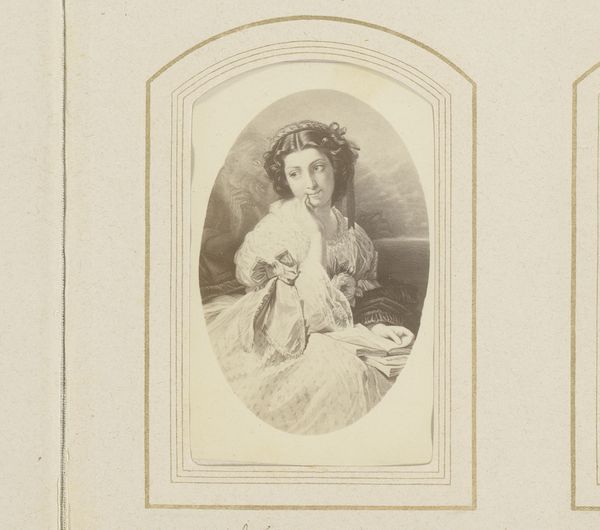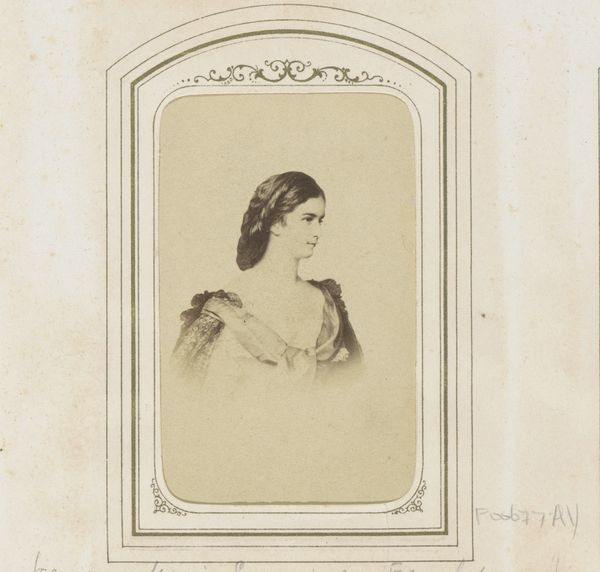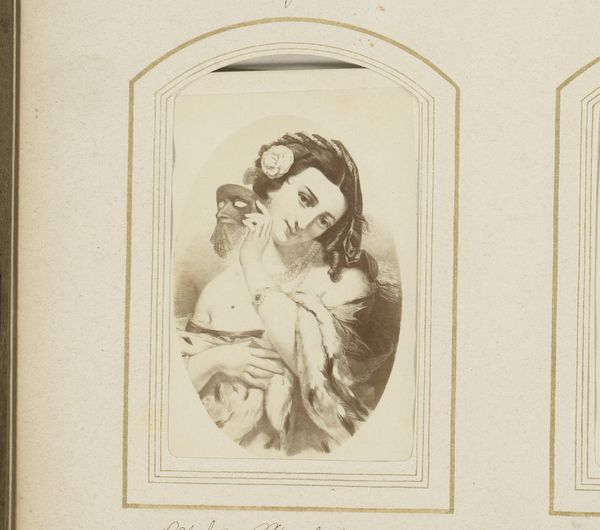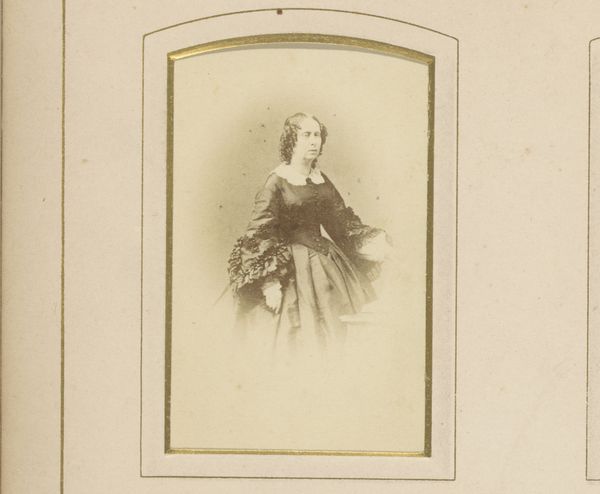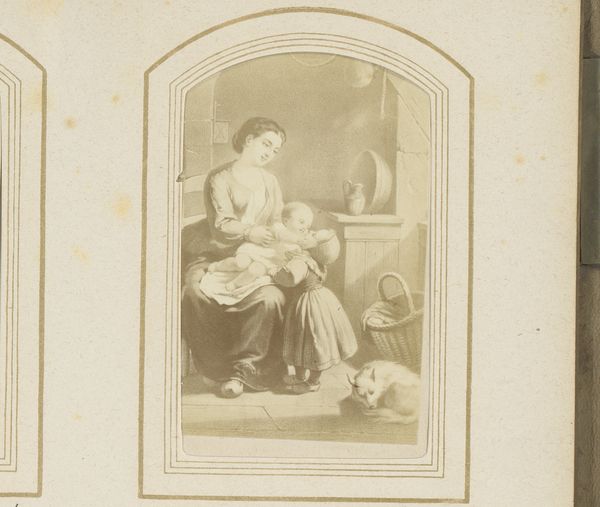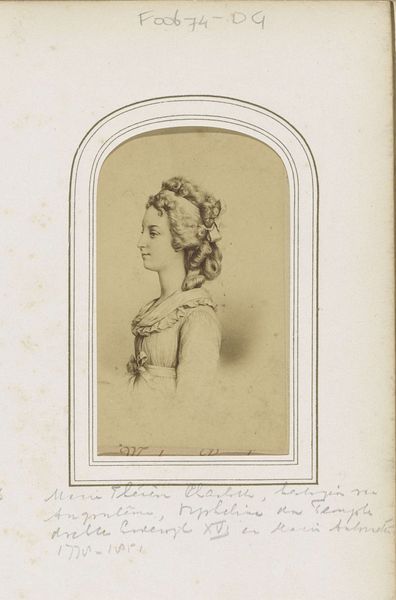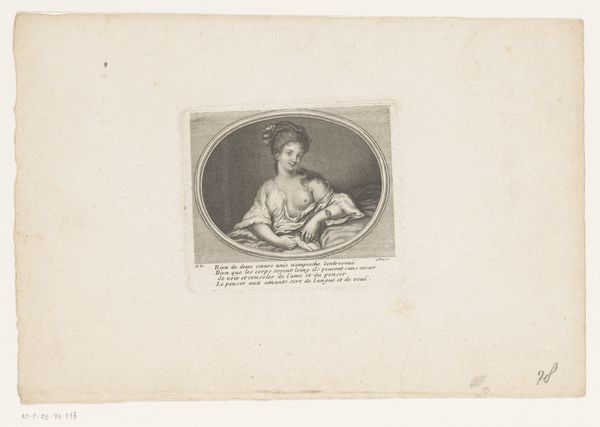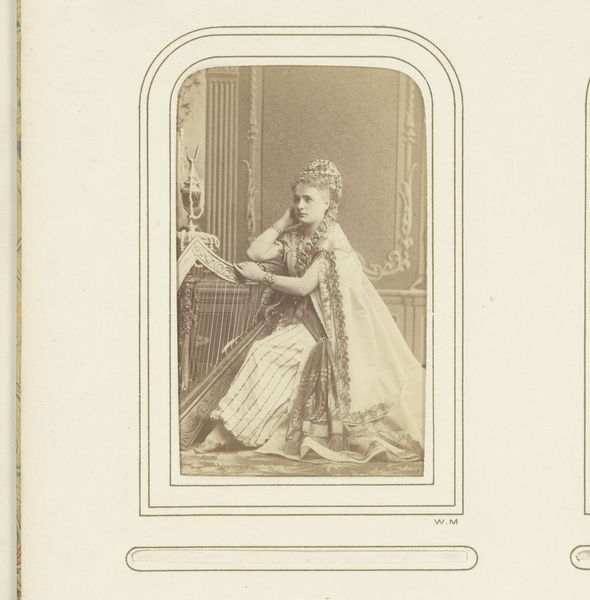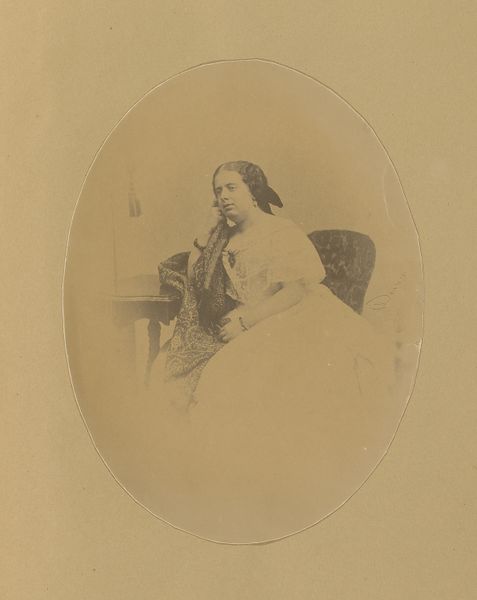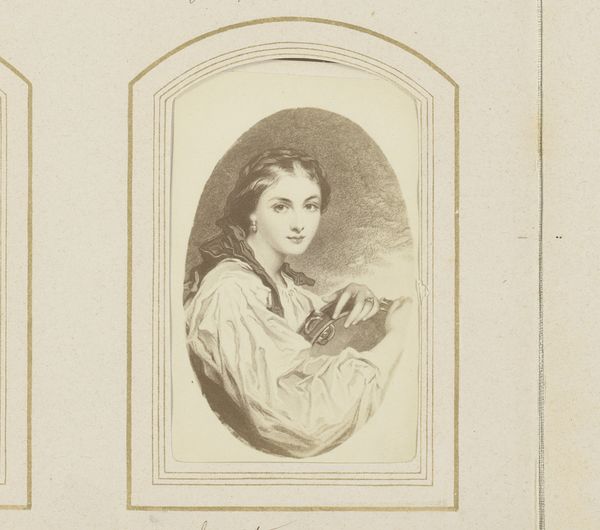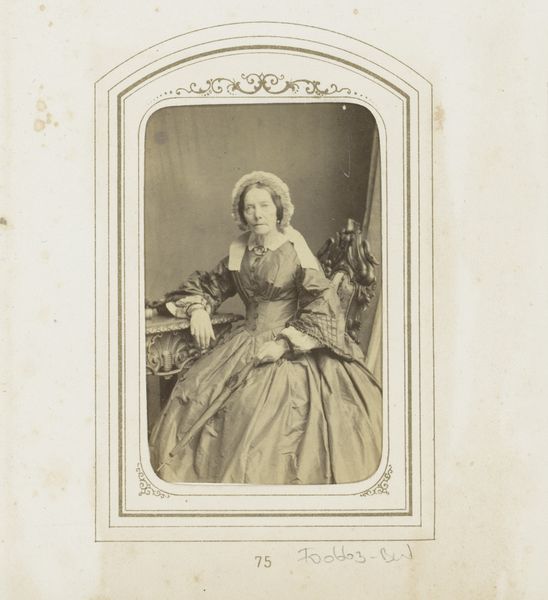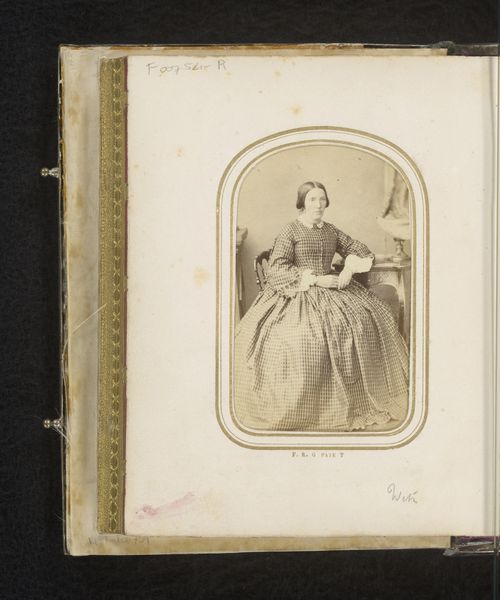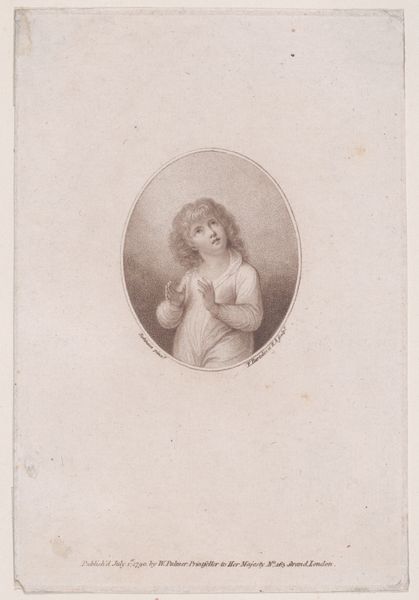
Dimensions: height 84 mm, width 51 mm
Copyright: Rijks Museum: Open Domain
Curator: Ah, yes, here we have an anonymous photogravure dating from somewhere between 1870 and 1890, known as "Fotoreproductie van Am Morgen." What strikes you first about this early photographic reproduction? Editor: An ethereal quality... almost ghostly. The young woman emerges from a blurry, beige background with soft gradations. You can almost feel the textures; she's like a dream fading into the light. Curator: The Romanticism style is strong here. Note the use of toned paper, how it lends that dreamy affect. The original photograph has been treated—almost as if they tried to make it resemble charcoal underpainting. Editor: Toned paper, you say? Back then, those were likely handmade, which brings me to question, how does the reproduction impact its initial impact? Were the prints crafted to mimic the fine art of the upper crust, therefore widening its consumer demographic, perhaps? Curator: Absolutely! You can almost imagine it gracing a parlor wall, a piece of accessible beauty. It is far removed from our notions of digital art where reproduction loses that labor-intensive nature that gives such warmth to images as this, despite being a reproduction itself. There's a tactile presence here; I see it as whispering of both the original moment and its countless reiterations. Editor: But consider the hands that carefully crafted these photographs and toned this very paper… Was it made in factories, performed as a service in some burgeoning photography business perhaps? These workers must have handled toxic materials, and I’d say they weren't always fairly compensated! Curator: Your eye for the production aspects does lend perspective! Though some might view such photogravures as mere commodities, you remind us to consider their journey, their origin and purpose beyond the immediate beauty. Perhaps we appreciate "Am Morgen" more when we understand those early mass-reproduction strategies, along with how many women perhaps stood bare-chested for the original images too, as models in a time when that act would've felt taboo! Editor: And what of its modern context? Here we stand in the hallowed halls of the Rijksmuseum, divorced from its original creation. I'd propose these reproductive means have only intensified that original Romantic affect for many in its audience. I feel my perspective has grown for certain. Curator: Agreed! It serves as a lens, literally and figuratively, to re-examine those notions that time, reproduction, and labor all shape our response.
Comments
No comments
Be the first to comment and join the conversation on the ultimate creative platform.
